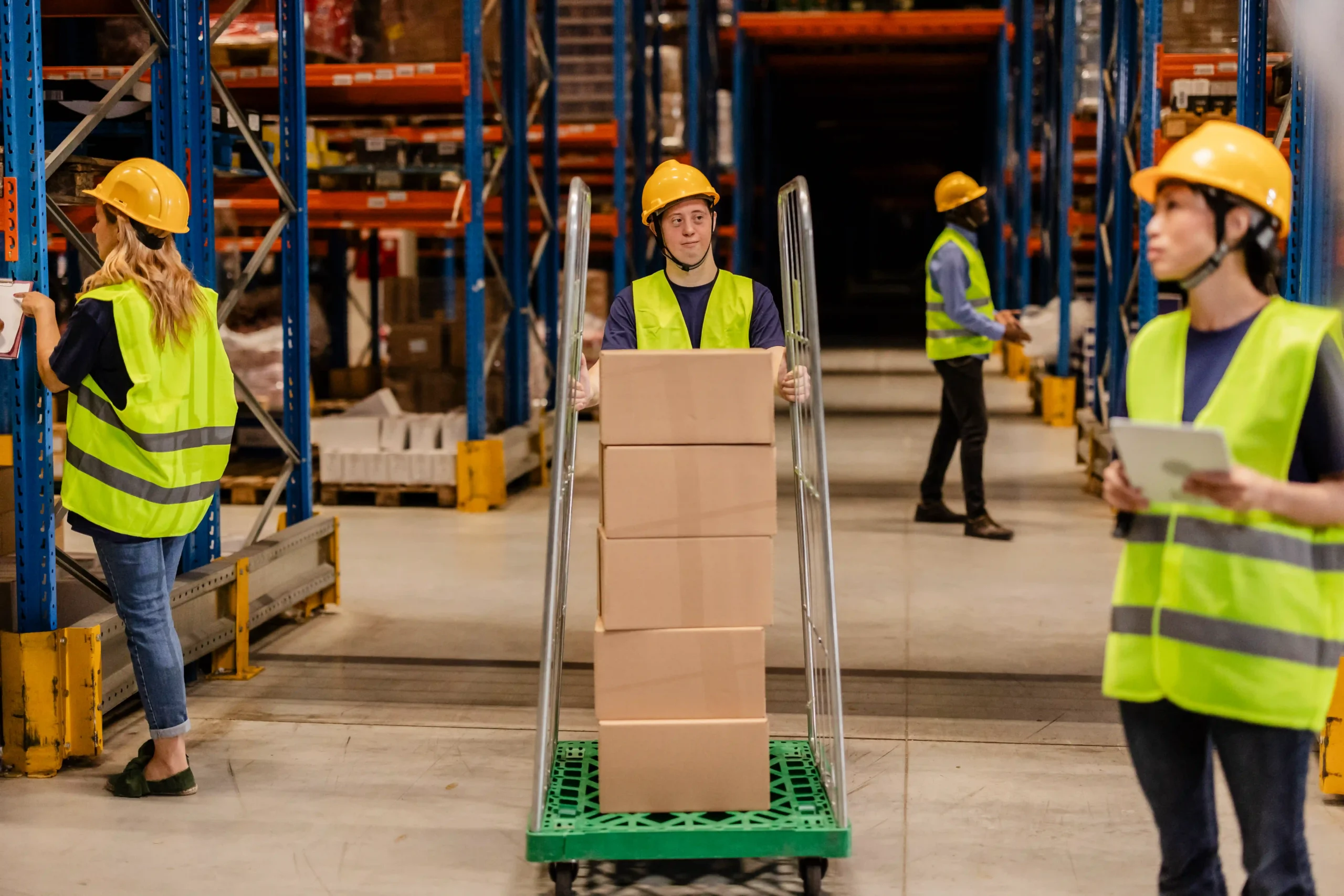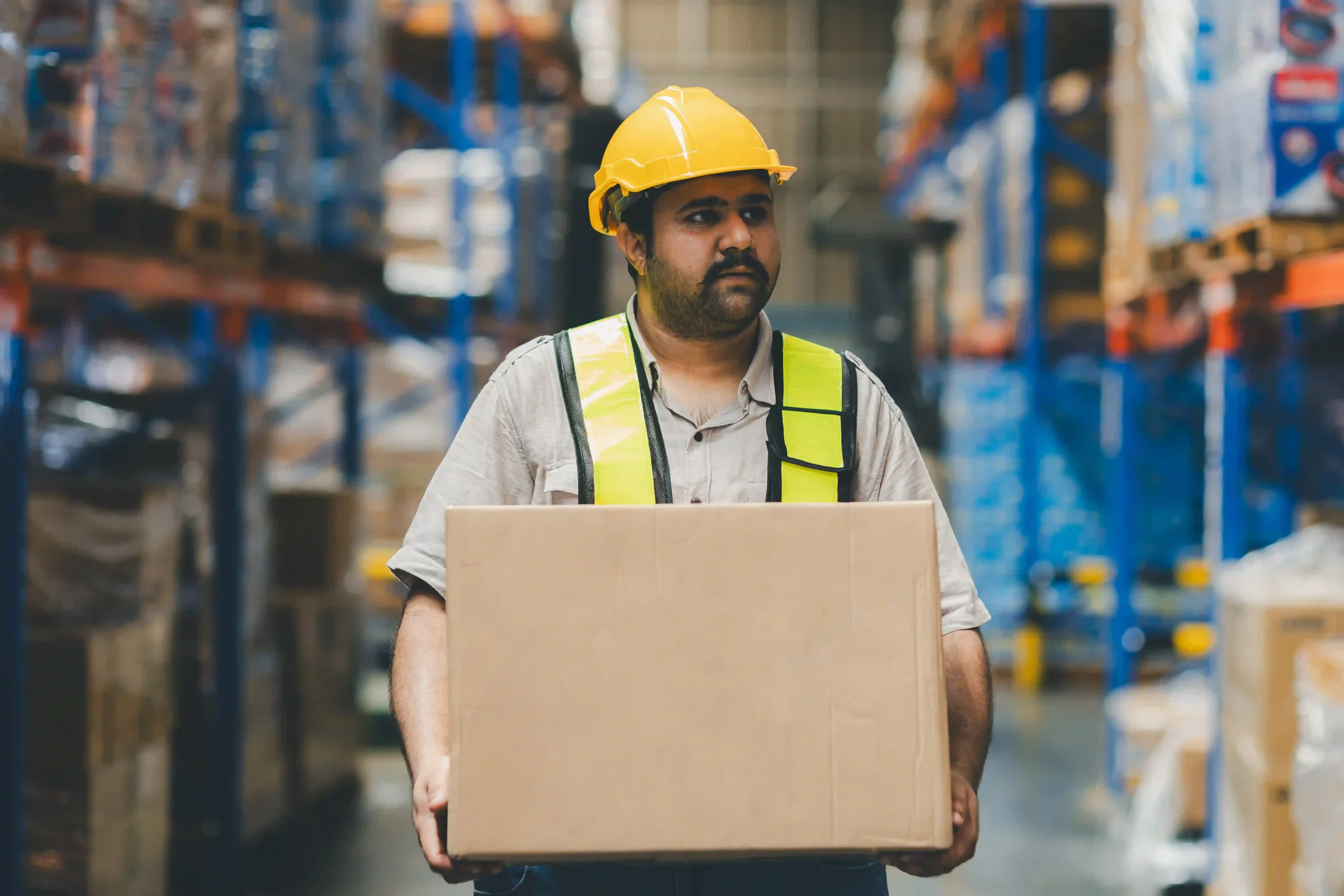At its core, order delivery services refer to the systems and strategies businesses use to move goods from warehouses or fulfillment centers to the customer’s door. This includes the actual transportation process, tracking and route optimization, scheduling, and everything in between.
Whether you’re shipping a single pair of sneakers or pallets of electronics, order delivery services are the engine behind that final step in the supply chain.

From my three decades in third-party logistics, I’ve seen firsthand that no matter how amazing your product is, if it arrives late or damaged, your customer doesn’t care. The sale becomes a problem. Order delivery services are one of the most overlooked yet powerful parts of customer retention.
When you get delivery right, customers don’t just remember the product—they remember the brand experience. Let me give you an example.
A DTC (direct-to-consumer) brand we onboarded last year was losing repeat customers because of missed delivery windows. After auditing their operation, we found poor route planning and a lack of regional fulfillment points were the culprits.
We helped them migrate to a distributed inventory model with real-time tracking, and their repeat customer rate jumped by 22% in six months. That’s the power of smart delivery.
A reliable delivery system also relieves pressure on your customer support team. Fewer “Where is my order?” inquiries means more time focused on growth strategies.
And, critically, the right system scales as you scale—so you’re not constantly patching together new logistics solutions every time you grow.
Not all deliveries are created equal. Different business models require different delivery strategies, and understanding the differences can save you thousands in shipping costs and countless customer complaints.
Here’s a breakdown of the most common types:
Same-day delivery is best suited for urgent deliveries—think medical supplies, perishables, or fast fashion brands. This usually requires hyper-local warehouse positioning or micro-fulfillment centers.
Next-day delivery is the sweet spot for most ecommerce brands. It’s fast enough to impress customers and can be achieved affordably with regional distribution.
Standard shipping (3–5 days) is still perfectly acceptable when expectations are set properly. Many customers will happily wait if they’re given upfront clarity.
Scheduled delivery is essential for bulky items like furniture or appliances. Customers choose a time window that fits their life, and white-glove service becomes a major upsell opportunity.
International delivery opens up global markets but comes with its own complications—customs clearance, duties, and longer lead times. This is where a strong 3PL really proves its worth.
I’ve found that clients often don’t know they can mix and match these models. You can offer same-day in dense urban areas, next-day in Tier 2 cities, and standard shipping elsewhere.
The key is integrating these services into your overall fulfillment strategy.
Choosing the right order delivery services partner isn’t just about price. I always tell clients: think long-term. You’re building a relationship that will directly affect your brand reputation.
First, evaluate your shipping volume and where your customers are located. A provider with fulfillment centers near your top markets will reduce transit time and shipping costs.
At Tri-Link FTZ, we often recommend clients move part of their inventory into our East Coast FTZ if they’re getting a surge in orders from that region. That one decision can shave two days off delivery time.
Second, look at their tech stack. Can they integrate with your ecommerce platform?
Do they offer API access, branded tracking pages, or analytics dashboards? In today’s environment, visibility isn’t optional—it’s expected. Third, assess how scalable they are.
Can they handle 10X the volume during your Black Friday sale? Can they switch gears if you expand to Canada or start shipping perishables?
Fourth, test their support team. Do they respond fast?
Are they knowledgeable? Your operations team is going to talk to them often—make sure it’s a relationship, not a ticketing system.
And finally, ask about their average delivery time by zone. You’d be surprised how many providers fudge these numbers.
At Tri-Link, we’re transparent with our SLAs because we know that performance builds trust.

There are five core elements I always tell people to evaluate when partnering with a delivery provider. First, speed is king—but only if it’s consistent.
It’s better to deliver in three days reliably than to promise two days and miss every third shipment. Second, look at their tracking infrastructure.
Customers don’t just want to know when it shipped—they want real-time updates. Make sure your provider supports full tracking transparency, ideally with branded updates to match your company.
Third, delivery coverage matters. If your customers are nationwide, your provider better be too.
Ask about how many zones they can service with 2-day shipping, and what their on-time rate is by region. Fourth, make sure their pricing is clear.
Watch out for surcharges, storage fees, and penalties. At Tri-Link FTZ, we always break our pricing down clearly so clients know what they’re paying for.
That transparency helps you plan and scale. Fifth, look for value-added services—kitting, labeling, custom packaging, or returns processing.
These services make a big difference in brand perception and operational smoothness. A good delivery partner should feel like an extension of your brand.
If there’s one thing I’ve learned over the years, it’s that order delivery services are not just about shipping a box. They’re about designing a system that works as your business grows.
One of the most effective strategies we implement at Tri-Link is distributed inventory. This means placing stock in multiple fulfillment centers across regions so orders can ship from the closest possible point.
It cuts down delivery time and lowers costs by avoiding cross-country express shipping. We also look closely at batching orders—grouping them for efficient pick, pack, and route scheduling.
You’d be amazed at how many companies are paying more than necessary just because their operations are disorganized. Another tactic is using hybrid delivery models.
For example, we may use major carriers for national routes and partner with local courier services for last-mile delivery in high-density areas. It’s faster and often cheaper.
Technology plays a big role here. Route optimization software, predictive analytics, and automated labeling reduce errors and speed up processing.
We’ve invested heavily in our WMS and API integrations for this very reason. Lastly, we continuously audit shipping performance.
We run regular reports on delivery time, error rates, and cost-per-order. This helps us identify inefficiencies and fine-tune operations.
Optimizing delivery isn’t a one-time project—it’s an ongoing strategy.
Technology has completely transformed how we approach order delivery services over the last decade. Back when I started in logistics, we relied heavily on manual tracking, paper-based dispatch logs, and physical inventory sheets.
Fast forward to today, and we’re using AI to optimize routes, machine learning to forecast demand, and real-time dashboards to monitor every shipment in motion. One of the most important technologies we use at Tri-Link FTZ is route optimization software.
This tool analyzes traffic, weather, and delivery windows to build the most efficient path for each driver. It’s not just about saving fuel—it’s about getting the package there faster and more reliably.
And the better our route planning, the fewer failed delivery attempts we have to deal with later. Real-time tracking is another game changer.
Customers today want to know where their package is every step of the way, and they want that data on their phone. Our system integrates directly with ecommerce platforms like Shopify, WooCommerce, and BigCommerce to push tracking updates out to customers automatically.
This reduces the number of support tickets asking, “Where’s my order?”—and that saves time and money. We also use predictive analytics to make better inventory decisions.
Based on sales patterns and historical data, we can anticipate high-demand products and move them closer to the customer before the orders even come in. That kind of forecasting improves delivery times by days and reduces the risk of stockouts.
Even something as simple as digital proof of delivery makes a huge difference. If a customer claims they didn’t receive a shipment, having a photo or e-signature makes resolution fast and clean.
These little pieces of tech all come together to build a smoother, smarter, more accountable delivery operation. Read more here.

Your delivery experience is your brand’s final handshake with the customer—and it either seals the relationship or breaks it. I’ve seen amazing products lose traction in the market because their delivery experience felt disjointed, confusing, or slow.
That’s why at Tri-Link, we treat the last mile with the same level of care as the first. The first step to delivering a great customer experience is setting clear expectations.
That means accurate estimated delivery dates at checkout, followed by consistent updates. Customers are surprisingly forgiving of delays—as long as you communicate. It’s the silence that kills trust.
We also make sure our delivery notifications are personalized and branded. A customer shouldn’t be redirected to a third-party courier’s confusing page.
Instead, they should land on a branded tracking page that matches your website, includes product info, and even suggests upsells or referral bonuses. Returns are another major touchpoint.
We build frictionless return flows for our clients so that the experience is just as smooth as the purchase. A prepaid return label, simple instructions, and fast refunds turn a potential frustration into an opportunity to build loyalty.
Packaging matters too. A beautifully branded box that arrives on time with no damage creates a lasting impression.
We offer kitting and packaging services that elevate the unboxing experience—because yes, people still film those and post them online. Lastly, we equip your support team with the data they need.
If something goes wrong, they have full visibility to see where the shipment is, when it was sent, and what the resolution options are. That responsiveness builds credibility and keeps your reviews strong. Read more here.
I won’t sugarcoat it—delivery is complex. There are a lot of moving parts, and even experienced brands can fall into traps.
But after decades in this business, I’ve seen the patterns and built systems to prevent the most common pitfalls. One of the biggest issues is addressing inaccuracies.
A mistyped zip code or an auto-fill error can derail a delivery. That’s why our system uses address verification tools at the point of checkout.
It catches errors before the label is ever printed. Another problem is damaged goods during transit.
We help clients choose the right packaging materials based on the fragility and size of their products. We also train our warehouse staff in efficient, secure packing techniques, because how a box is packed affects whether it survives the journey.
Inventory visibility gaps are another killer. When your ecommerce platform doesn’t talk to your warehouse system, you risk overselling or delays.
We solve that with our integrated WMS that syncs in real time with your sales channels. That way, your website only shows what’s truly available.
Shipping costs are another area where businesses bleed money. We regularly audit carrier rates and negotiate better volume pricing on behalf of our clients.
Often, we can cut costs by 10–20% just by using smarter zoning and carrier selection. And finally, poor customer communication during delays.
Things go wrong—it’s logistics. But if a customer has no idea what’s going on, they’re going to assume the worst.
We train your team to get ahead of issues with proactive alerts and clear resolution pathways.
To think about order delivery services in isolation is to miss the point. Delivery is the final step of your fulfillment strategy, but it’s connected to every part of the supply chain.
Inventory placement, warehouse efficiency, packaging workflows, carrier contracts—they all affect delivery outcomes. At Tri-Link FTZ, we design end-to-end strategies that integrate fulfillment and delivery as one seamless operation.
That means deciding where to store your SKUs, how to pick and pack orders efficiently, and how to trigger the best shipping method automatically based on size, speed, and customer location. Take, for example, our work with a subscription box brand.
They were shipping all orders from a single warehouse in Texas. When they added a second location in New Jersey and started splitting inventory intelligently, they reduced delivery times by two days across the board and saved $1.25 per order in shipping fees.
That didn’t just improve margins—it improved reviews. Returns also need to be part of your fulfillment strategy.
We integrate returns handling back into the warehouse system so that restocked items become available for resale quickly. That keeps inventory fluid and reduces write-offs.
Even custom packaging and labeling play a role. Our systems allow you to ship differently branded boxes depending on the customer segment.
So your wholesale partners get one type of packaging, while your DTC customers get another. That kind of flexibility sets modern fulfillment apart. When done right, delivery becomes a growth driver—not just a cost center.
It supports your marketing campaigns (“2-day delivery guaranteed!”), your product launches, and your holiday ramp-up. It’s not just the tail end—it’s a key part of your business engine.
If you’ve made it this far, you’re serious about improving your order delivery services—and that’s a smart move. In today’s competitive landscape, the companies that win are the ones that treat logistics not as an afterthought, but as a core part of the customer experience.
At Tri-Link FTZ, we bring over 35 years of hands-on experience in logistics, warehousing, and order fulfillment. Our clients range from fast-growing ecommerce brands to established B2B suppliers, and they all have one thing in common: they rely on us to get their products into their customers’ hands with speed, precision, and care.
We don’t just offer services—we build solutions. We take the time to understand your business, your challenges, and your goals.
Whether you’re launching a new product, expanding into new markets, or just tired of missed deliveries, we’re here to help. If you’re ready to elevate your order delivery strategy, let’s talk.
You can request a quote and we’ll get back to you with a custom logistics plan that fits your business perfectly.
Share this article
We have other resources available upon request as well as one-on-one support and personalized answers, just like our services.
Simply contact us anytime and we’ll get back to you to answer your questions and provide meaningful answers that show you how Tri-Link supports your logistics, reduces costs, and accelerates efficiency.
Tri-Link delivers exceptional FTZ and 3PL services tailored to your global trade needs.
Our solutions combine innovation, quality, and efficiency to exceed your expectations and meet your specific requirements.